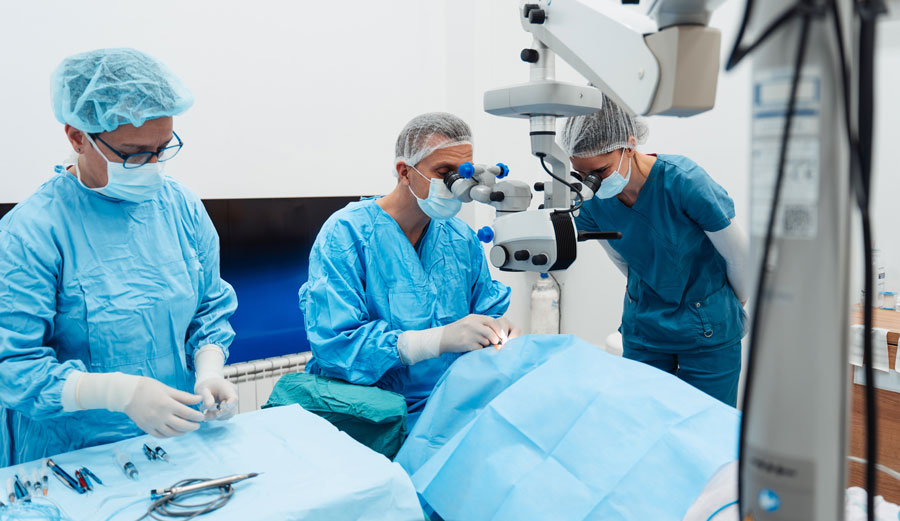Cataracts and Older Adults: When Is It Time for Surgery?
Cataracts in older adults are one of the most common causes of vision changes later in life, often developing gradually over many years. While early cataracts may cause only mild vision changes, advanced cataracts can interfere with daily activities such as reading, driving, and recognizing faces. Candidates for cataract surgery typically become eligible for the procedure in their late 60s and early 70s.
Understanding cataract progression stages, when surgery becomes necessary, and what to expect before and after the procedure can help you make informed decisions about your eye health.

How Cataracts Progress
A cataract forms when the natural lens of the eye becomes cloudy, typically due to age-related changes in lens proteins.
In the early stages, cataracts may cause:
- Blurred or hazy vision
- Sensitivity to glare
- Difficulty seeing at night
- Colors appearing faded
Over time, the clouding increases, and vision can become significantly impaired. Because this progression is gradual, many people adapt to vision changes without realizing how much clarity they’ve lost—until everyday tasks become difficult.
Signs you need cataract surgery may include:
- Avoiding driving at night due to glare from headlights
- Difficulty reading even with updated glasses
- Discomfort from bright lights
- Reduced confidence in navigating unfamiliar areas
Modern Surgical Options
Modern cataract surgery options are safer, faster, and more precise than ever before. Today, cataract surgery for seniors typically involves removing the cloudy lens and replacing it with a clear, artificial intraocular lens (IOL).
Types of IOLs include:
- Monofocal lenses – Provide clear distance vision; glasses may still be needed for near tasks.
- Multifocal lenses – Correct both near and distance vision, reducing dependence on glasses.
- Toric lenses – Designed for patients with astigmatism.
- EDOF (Extended Depth of Focus) lenses – Provide a continuous range of vision from distance to intermediate, offering better clarity for tasks like computer work while reducing—but not always eliminating—the need for reading glasses.
Your ophthalmologist will help determine the right time for cataract surgery, based on your symptoms, eye health, and lifestyle needs—though many patients find that scheduling surgery sooner rather than later helps maintain independence and quality of life.


What Recovery Looks Like
Most patients notice improved vision within days of surgery, with full recovery in a few weeks. Vision may be slightly blurry at first as your eye adjusts to the new lens. It’s common to experience mild discomfort, light sensitivity, or itching during the healing process.
Here are some cataract surgery recovery tips:
- Rest your eyes during the first day
- Use your prescribed eye drops exactly as directed
- Avoid heavy lifting or strenuous activity for at least a week
- Wear protective eyewear when sleeping or outdoors
Pre-Op and Post-Op Care Tips
Pre-Op Cataract Surgery Preparation
- Arrange transportation to and from surgery.
- Discuss your medical history and medications with your ophthalmologist.
- Use any prescribed pre-surgery eye drops as directed.
- Avoid wearing makeup or facial creams on the day of surgery.
Post-Op Cataract Care
- Follow your prescribed eye drop schedule exactly.
- Wear your protective eye shield as instructed.
- Avoid rubbing or pressing on your eye.
- Limit heavy lifting, bending, or strenuous activity for at least a week.
- Attend all follow-up appointments to ensure proper healing.

Clearer Vision Is Within Reach
Call Buffalo Ophthalmology today to schedule a cataract evaluation and take the first step toward seeing clearly again.
Request An Appointment
"*" indicates required fields

